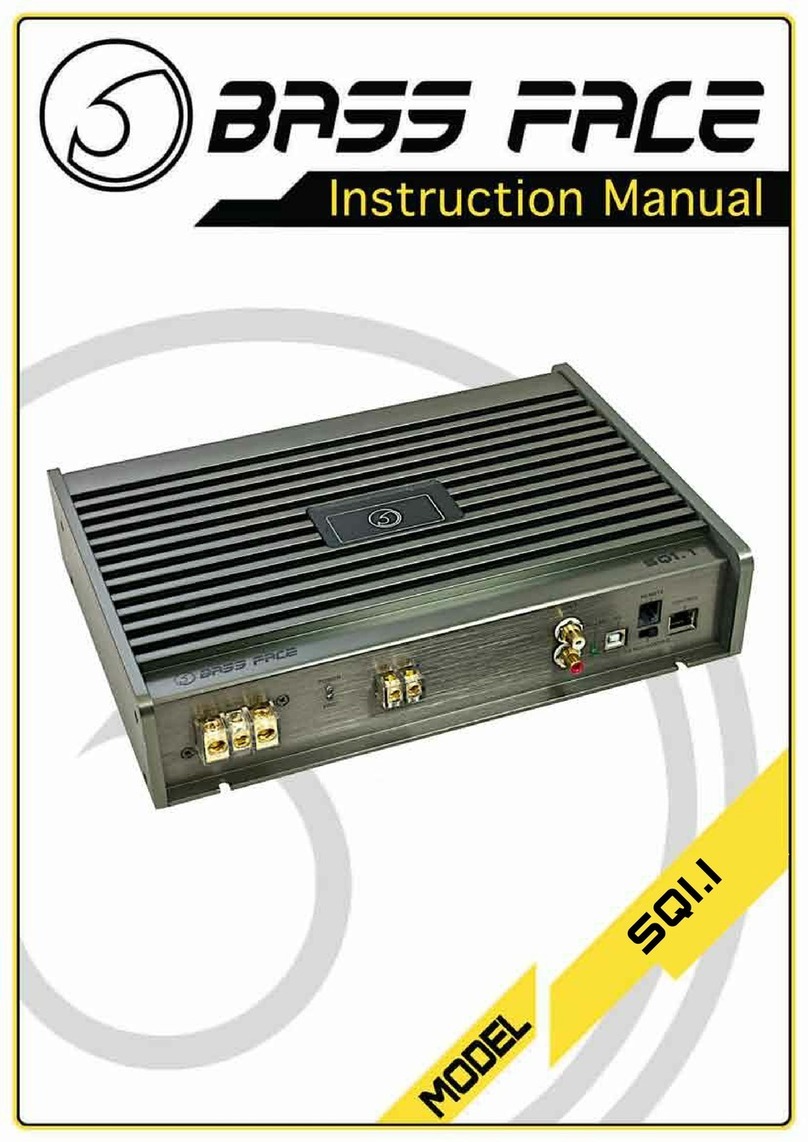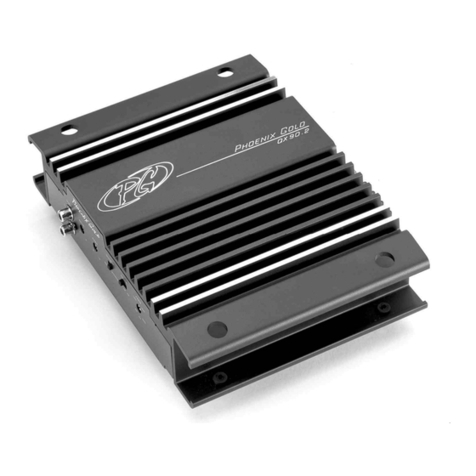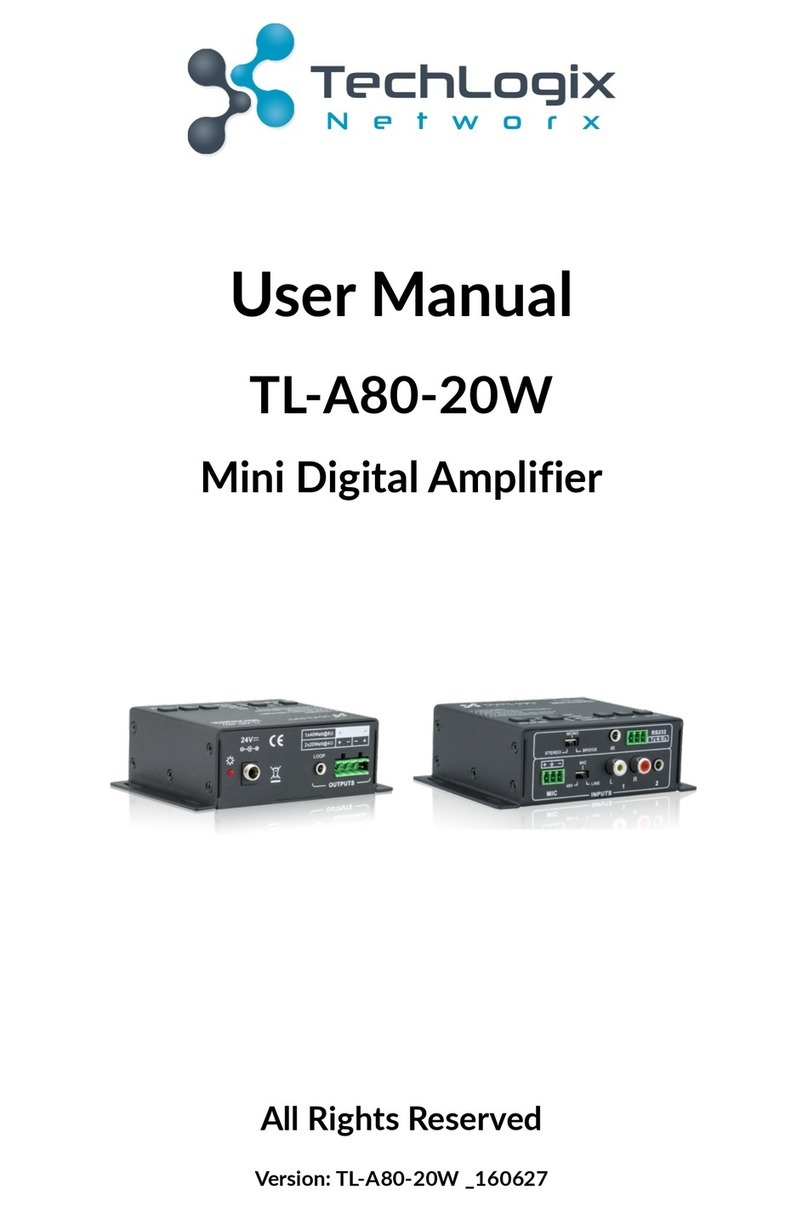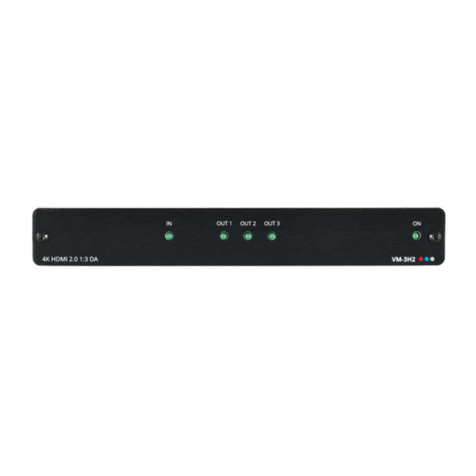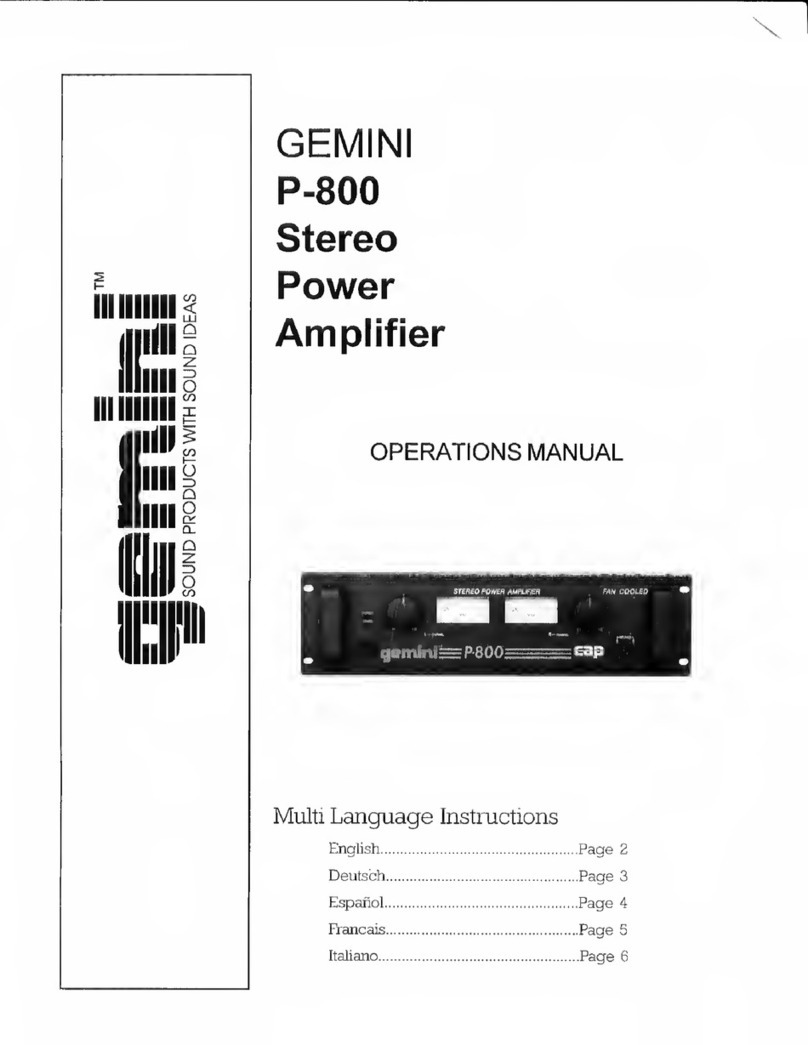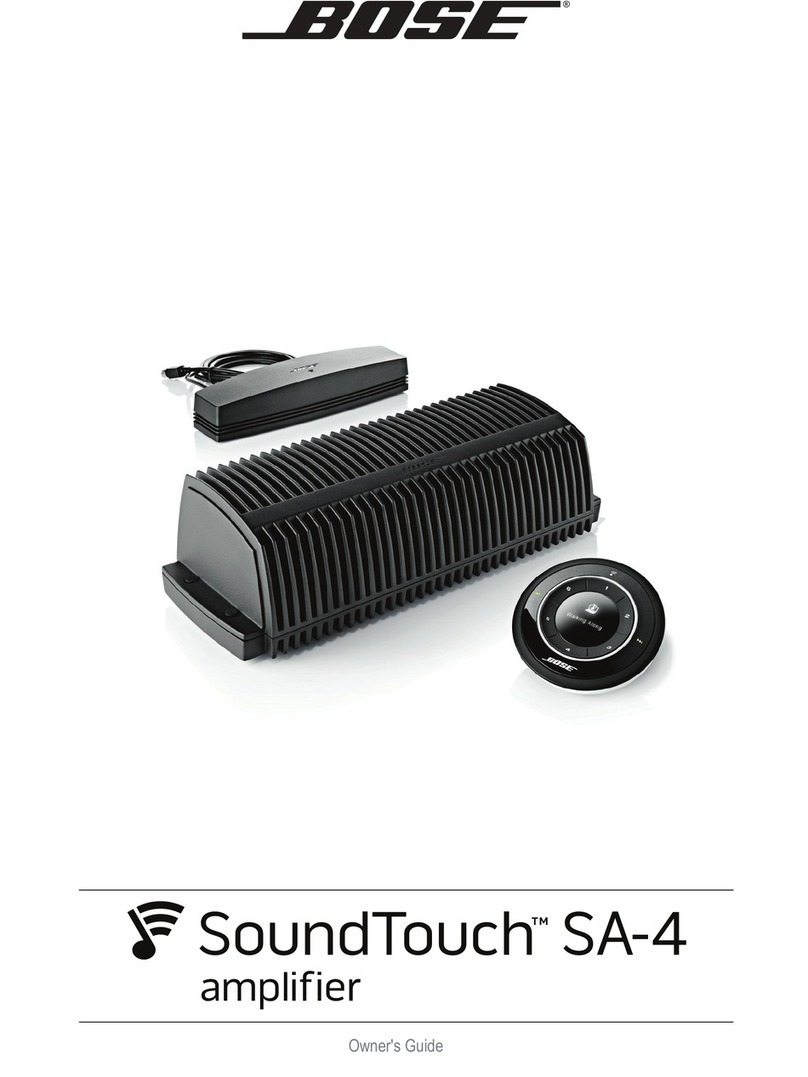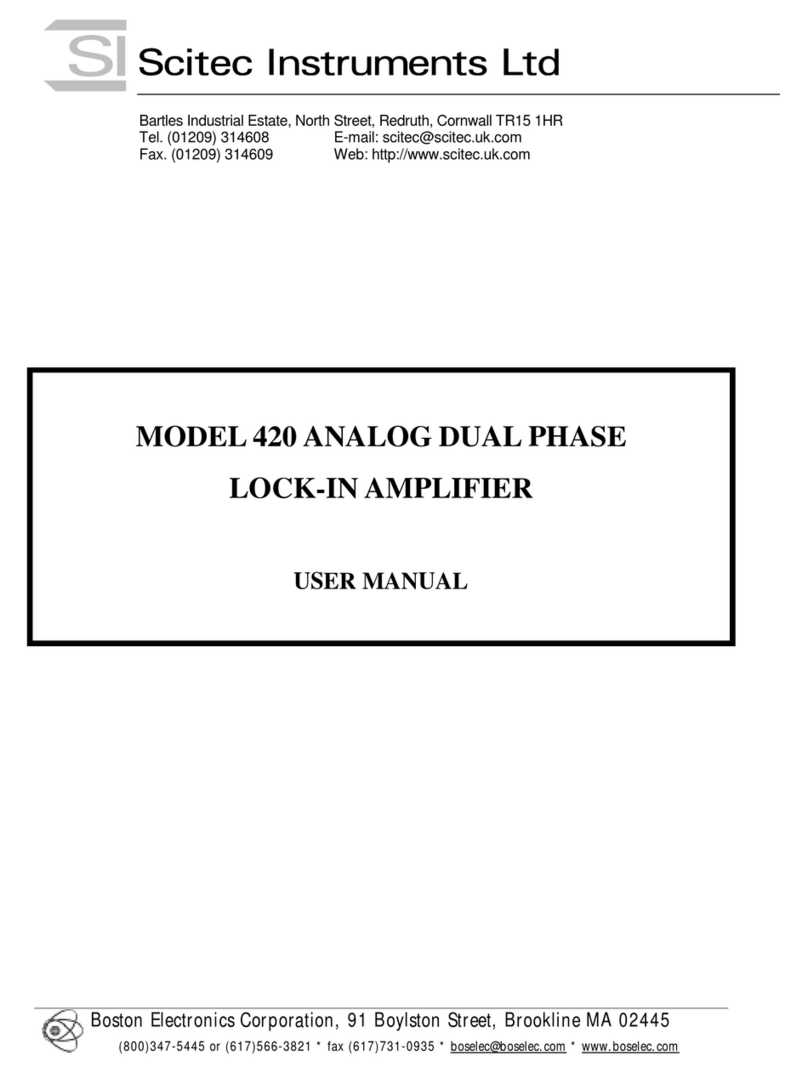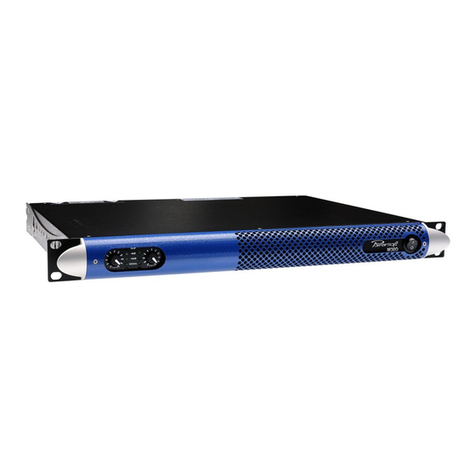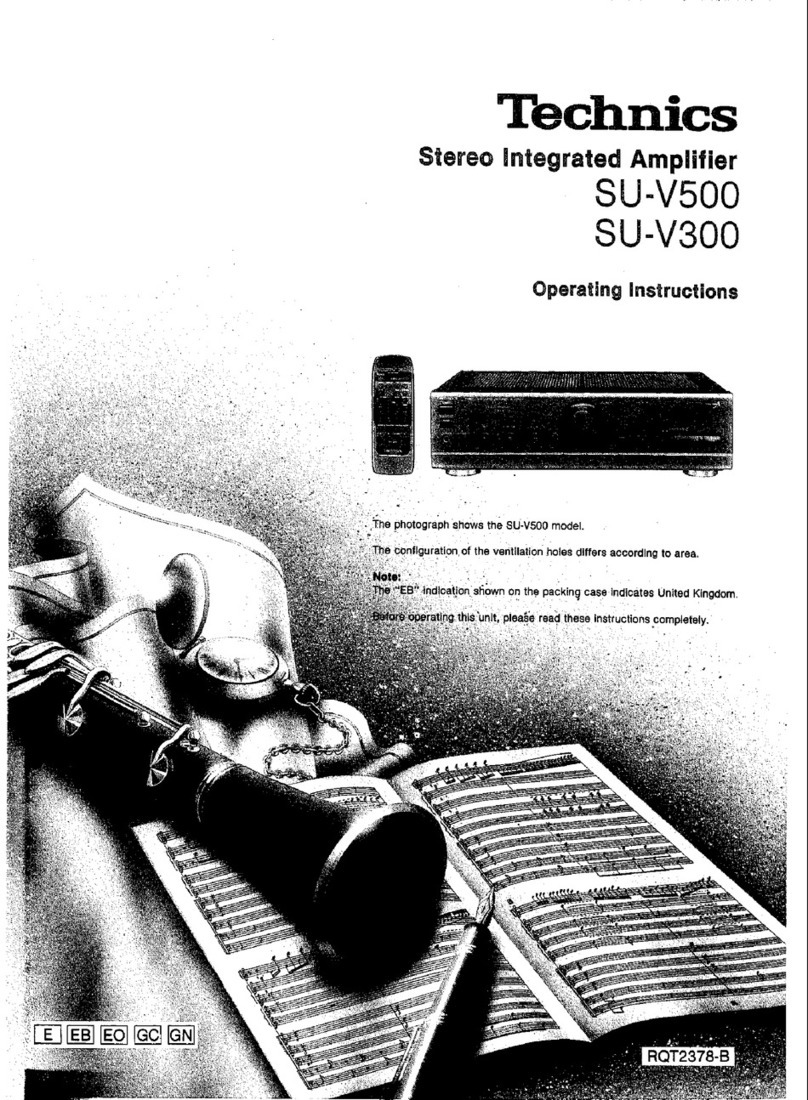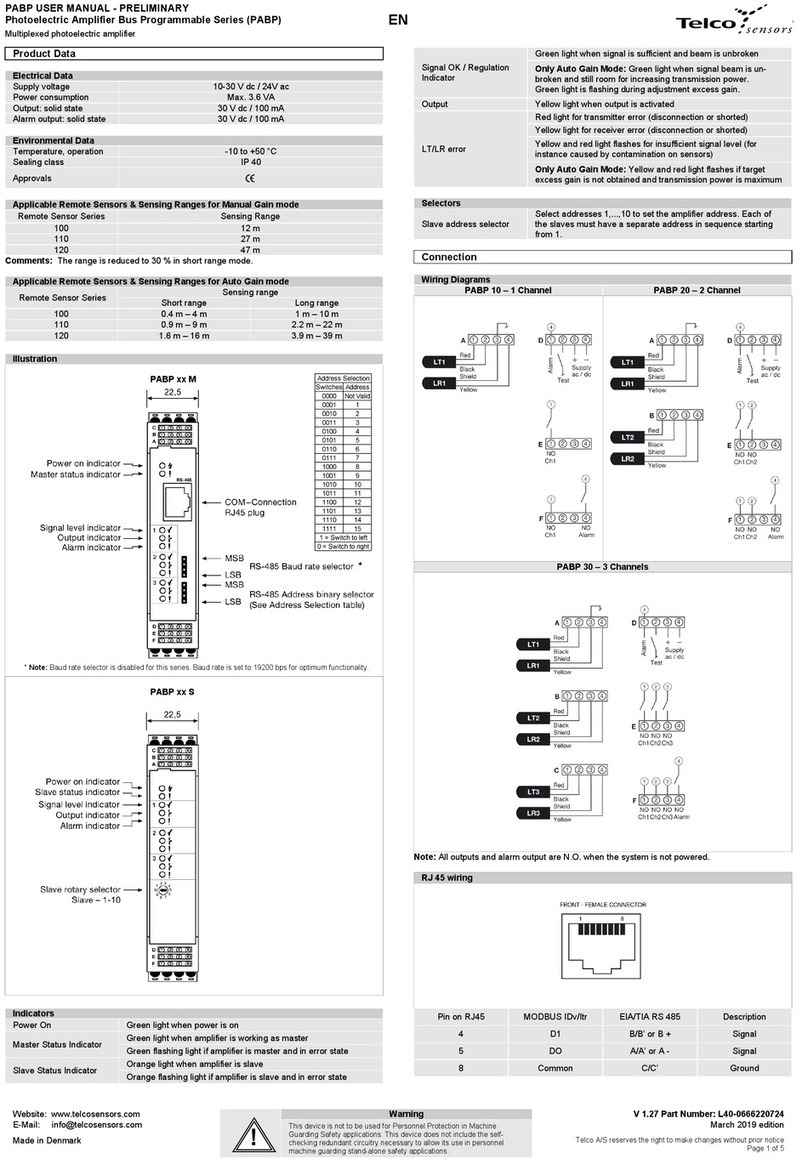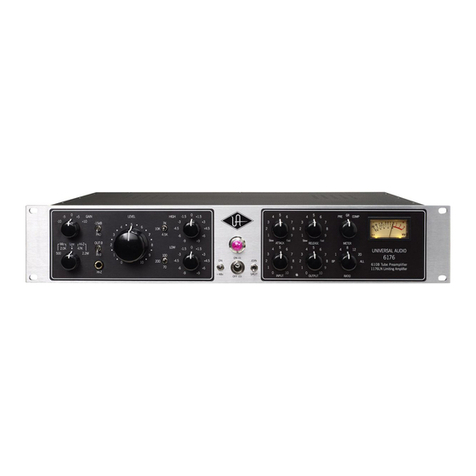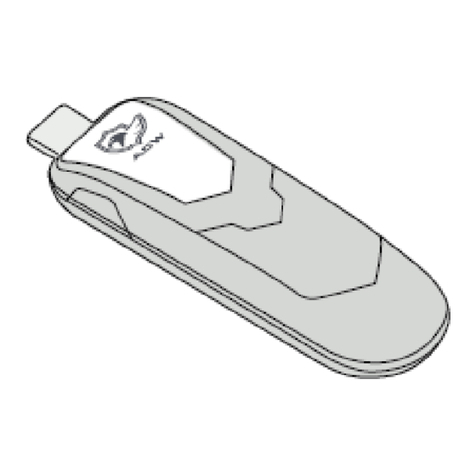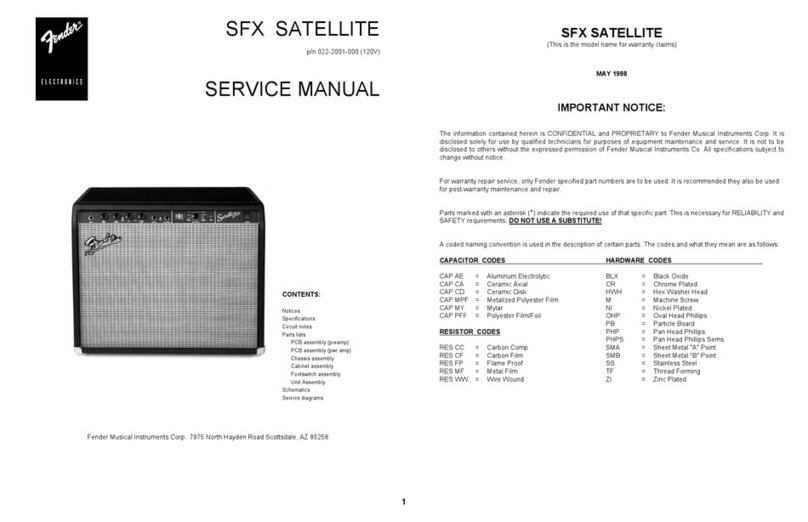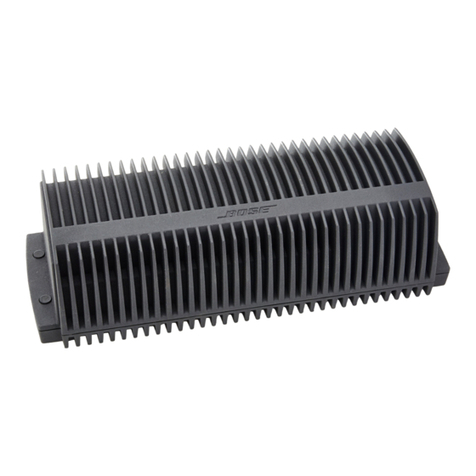BASSFACE DB1.1 User manual


!Warning!
Bass Face products can produce sound pressure levels that can
permanently damage your hearing. Please exercise extreme caution
when setting volume levels. Also be mindful of other listeners, they might
not enjoy listening at the same levels as you. We will not be held in any
way responsible for injuries caused by the misuse of our products.
Please take care when attempting any alterations or installations with the Please take care when attempting any alterations or installations with the
electrical system of the car. ALWAYS disconnect the positive terminal at
the battery.
BassBass Face operates a policy of continuous improvement and reserves the right to update
and alter the content and design of both product and instructions as it sees fit. Although
the information contained in the instruction manuals is given in good faith based on
extensive testing and experience the final responsibility for the installation and operation
of your system must rest with the installer and the operator. If you are installing your
equipment yourself please be realistic about your abilities and seek professional advice
if you are unsure about any aspect of the task that you are undertaking.
IfIf you face a particular problem with your installation or product we will be happy to
answer your questions. Please email info@bassfaceaudio.co.uk - please note that our
response time is 2 to 3 days, and that we are closed over the weekend. For more urgent
help please contact your country distributor. In the UK this is Thompsons Ltd
(www.thompsonsltd.co.uk)
Please note that Bass Face is unable to process warranty support directly. For warranty
support you MUST contact your distributor.
Introduction:Introduction:
Firstly, thank you for your purchase. Every element of this product has been optimised to
give you the best possible performance for your money. We think that Bass Face
represents the highest quality to price ratio available on the market today.
Please take the time to read these instructions carefully. You will need to follow them to
have a successful install and get the most from the product.
DoDo remember that incorrect installation or abuse is NOT covered under warranty – it is
YOUR responsibility to make sure that your installation and partnered product is suitable
and compatible.

Firstly, thank you for your purchase. Every element of this product has been
optimized to give you the best possible performance for your money. We think that
Bass Face represents the highest quality to price ratio available on the market
today.
Please take the time to read these instructions carefully. You will need to follow
them to have a successful install and get the most from the product.
DoDo remember that incorrect installation or abuse is NOT covered under warranty
– it is YOUR responsibility to make sure that your installation and partnered
product is suitable and compatible.
The Bass Face DB1.1 amplifier is a high power mono amplifier with an oversized
power supply for high fidelity distortion free sound and increased reliability.
BeforeBefore you even get the amplifier out of the box (realistically, you will have done
this already and boy it looks sweet doesn’t it!) you will need to install a suitable
wiring kit in your vehicle. We recommend the use of a 4AWG wiring kit with
appropriate termination for maximum performance, especially if you will be
running the amplifier at 2 ohm impedance. If you are planning to run multiple
amplifiers you will need to up the gauge of the wiring accordingly. Do bear in mind
that many manufacturers offer wiring kits that actually come up smaller in true wire
gauge than advertised.gauge than advertised.
To begin, disconnect the car battery, taking note of any required precautions
suggested by the vehicle manufacturer such as alarm or radio codes, or on board
computer or AGM battery requirements.
You need to find a suitable point on the firewall (bulkhead) to run the power wire
through. If you have to drill a hole, you will need to fit a rubber grommet to ensure
the wire does not get damaged as a short will ruin the whole setup and can be very
dangerous. The positive wire needs to go to the + positive terminal on the battery.
A fuse of appropriate size to protect the cable (for a quality 4 AWG kit we suggest
50A) needs to be fitted in line and no more than 18” from the battery.
OnceOnce you have the cable in the car, run it back to the boot or to where you intend
to fit the amplifier. When you do this, be aware you will need to run the remote
cable and the RCA’s from the head unit back to the amp too. A common mistake
is to forget that a car amplifier needs the remote 12V turn on cable to see power
for it to even work! If you only fit power and ground you’re going to get…. Nothing!
IfIf the wires you are running have to run over or go alongside other looms of the
car, try to cross them at right angles to avoid unwanted interference in the signal,
and try not to run them parallel with other cables either. If you can, run the power
and the signal cables down opposite sides of the car. This isn’t essential but if you

do get any interference once the job is complete the first thing to look at will be
separating these wires so if you can do it first it makes a lot of sense!
TheThe absolutely most important aspect of the power install is the earth wire. This
wants to be very securely bolted to the chassis of the car. We recommend drilling
a hole (take care not to drill through your spare tyre, brake lines or anything else!)
in the boot floor and sand off any paint to the bare metal where the wire will be
connected. A bad earth is a very common flaw in installation and can cause a
number of headaches later down the line so be sure to take care in doing this. Do
NOT use a self tapping screw to try and screw the earth down, as it will come loose
andand impair performance. Other common disasters include trying to earth to rear
light mounting bolts, boot lock mountings and other ways to “trap” the cable in the
vein hope you might get a good earth. For every volt the amplifier doesn’t see it
requires TWICE the power to create the same output. That means poor
performance and a possible broken amplifier…. DO THE EARTH RIGHT!
Once your power cable, RCA and remote lead are all securely running through the
car to where you want the amp and the earth wire is fastened securely,
somewhere close to the amp, you can fit the amplifier. Don’t forget to fit the bass
remote control and run the control cable with the other wires to the amplifier! This
can be plugged in right away.
The amp needs to be mounted on a solid surface, favorites are boot floors, backs The amp needs to be mounted on a solid surface, favorites are boot floors, backs
of seats etc. Wherever you do choose to mount the amp, it needs sufficient
ventilation; 2-3” around will be enough. We do not recommend mounting an
amplifier on a bass box as the vibrations can cause damage to the internals of the
amplifier over time.
YouYou are now ready to connect your subwoofers! The DB1.1 has 2 sets of positive
and negative connectors, this is for ease of connecting multiple speakers and
bridges inside the amplifier (they are not separate outputs) Take care that the
positive on the speaker is going to the positive on the amplifier. If your car
speakers and woofer are connected “out of phase” then it can severely affect bass
output as the speakers might cancel each other out acoustically.
TheThe Phase switch on the amplifier is there so you can quickly flip the phase of your
subwoofers to your car speakers, instead of taking out the wires and changing the
+ and – around. This can be very useful if you are trying to get a specific sound or
if you have wired your door speakers and subwoofer out of phase to each other by
accident.
ThisThis bit is VERY IMPORTANT. You need to ensure that the load you subject your
amplifier to is within specification and of a sensible nature and that you have the
appropriate cooling where applicable. This particular amplifier is suitable for
running a mono load at at minimum of 2 Ohms, however at 2 Ohm it will generate

a large amount of heat due to being less efficient. At 2 Ohm loads, it is YOUR
responsibility to ensure the amp is kept cool. Vertical mounting, “hot boxing” or
other improper installation can cause severe damage to the amplifier. The TDOS
protection circuitry reads current draw to define protection parameters, the
algorithm it uses presumes the amplifier is used at 4 Ohm. If you are using the amp
at 2 Ohm you will need to bear in mind that the protection circuitry may not
intervene in time. That is not to say that the amplifier can not function reliably at 2
Ohm.Ohm. It just needs the appropriate cooling; if used in a confined space it needs
fans to circulate the air (especially if mounted vertically) ideally the amp needs to
be horizontal on the ground plane and be mounted to a heat conductive plate. A
regular mistake that is made is to mount the amp onto a board that has been
covered in carpet. This restricts airflow under the amplifier, limiting the amount of
convection cooling that can be achieved and insulating the amplifier underneath.
This actually builds up heat inside the amp! Avoid mounting on to carpet where
possible. possible.
Just as important is to remember that as well as the actual physical impedance
you need to consider the type of load you are going to subject your amplifier to. A
single (or pair of) 8, 10 or 12 or 15 inch subwoofer of an appropriately matched
construction and in a nicely designed enclosure will be fine run off a DB1.1 amp at
4 ohms or 2 ohms in the case of the pair (assuming proper setup) but you don’t
want to try and run eight massive heavy coned dual voice coil monster woofers off
it, even though on paper you might well have a 2 Ohm load. You have to use a bit
ofof common sense – if you need to fill a van with eight woofers like that then use
eight DB1.1’s. Big power woofers often have heavy cones, these type of woofers
can have big impedance dips and can cause clipping on transients. If you are
going to wire in 2 of these or a DVC heavy coned subwoofer, we recommend that
you wire them in series at 8 Ohm and use a higher gain setting on the amp. For
wiring instructions please see the diagram later in this manual.
Obviously, we recommend the Bass Face range of subwoofers and speakers for
ultimate compatibility. It's also worth mentioning at this point, that, running audio
into the amp, with any level of gain, but no speaker attached can and will seriously
damage your amplifier if done for long periods of time. Some amps have load
sensing and will shut the amp down if no speaker is attached, some do not. Car
amplifiers often do not.
Another danger to your amplifier is mounting it onto your bass box. While this is a Another danger to your amplifier is mounting it onto your bass box. While this is a
very popular technique, people completely overlook the fact that the bass box will
cause the internals of the amplifier to be vibrated violently and can cause
components to become disconnected from the board, or crack the board itself.
This will of course break the amplifier and would not be covered under the limited
warranty.
TimeTime to lay on some power. Connect the earth first. Then 12V power, then remote.

Then connect in the RCA cables and you can move onto setting up the gain and
sound controls on the amplifier (the fun bit!)
Setting the “Gain” or “level” on the amp is a crucial aspect and needs to be done
with care, otherwise you can easily damage your equipment. Before we move onto
this we need to be sure the crossover settings are right for the application.
IfIf you have an active crossover elsewhere in your system (such as the head unit)
then you may wish to set the crossover switch on the amp to OFF. Otherwise, in
most cases, this must be set to ON.
WeWe recommend a LPF of about 100hz initially as an excellent starting point for
most car woofers. Try 80Hz and 120Hz too – you will notice the sound change. If
you are running a 15 inch woofer then you will want to be looking at a lower
crossover frequency (like 80Hz) – if it’s an 8 inch driver then you may want to go
up to 120, 150 or even higher.
Once your crossover settings are set up, you can move on to the gain or “Level”.
This bit is REALLY important!
BeforeBefore you do anything else, please ensure the BASS BOOST knob is set to 0 –
I.e. switched off. We also suggest you turn the bass remote level to a mid setting
to allow adjustment later to taste.
Next,Next, you need to learn about the subsonic filter. This is a crucial part of the setup.
When the music frequency goes lower than that which the subwoofer system can
reproduce with any guts you are wasting a lot of energy asking the amplifier to
create those parts of the music. Worse still, your woofer will try its best to create
them and find itself moving backwards and forwards at very large levels of
excursion and distortion from the overstretched amplifier. Many bass amplifiers do
not have subsonic filters – this is MADNESS and results in a lot of burned out
wooferswoofers and amplifiers. Many bass amplifiers DO have subsonic filters that their
owners do not understand – this is MADNESS and results in a lot of burned out
woofers and amplifiers!!!
As a rule of thumb you should set your subsonic filter to about 30Hz – this is a
generalization because obviously different subwoofer setups can play to different
low frequencies. Something like an 8 inch sub in a ported box designed to be very
punchy will struggle to get below 50Hz – in which case inch up the subsonic to that
level to improve all round performance and protect the components. If you have a
15 inch woofer in a well sized sealed box that is designed to sound low and
atmospheric then you may be able to come down to 20Hz with the filter. As you
turnturn the filter up you will hear it stopping the low bass from being played – but you
will notice that you can play the music louder with less distortion. You need to set
this to optimum balance later.

Now it is time to disconnect all other subwoofers or speakers so that you can hear
only the woofer powered by this amplifier. Next, turn the level on the amp all the
way down. Choose some music that you’re not particularly keen on that has a
good range of bass, treble and vocals (helps not to get lost in the music whilst you
work on the system.)
ThenThen go to your head unit and gradually turn up the volume until you begin to hear
slight distortion from the subwoofer. This is normally about ¾ the way up the scale.
This is the maximum setting that you will EVER use from now on – make a mental
note of it. Next, turn the head unit down from here by around ¼. This builds in a
little bit of “headroom” so should you have a track that is recorded quieter than the
others or is at a lower bit rate, you can boost the volume without pushing anything
into distortion.
OnceOnce the volume is set on the head unit, go to the amplifier and slowly start to turn
the “Level” knob up, keep going till it is at a level you are happy with (that isn’t
going to deafen you!) or until your woofer(s) are just about to distort. If they do start
to distort, turn back down till they sound perfectly clear.
OneOne thing that you need to learn is how to actually hear a woofer “distort” – it
sounds different than a full range speaker because rather than hearing distortion
in the conventional sense you will hear it as an unclean bass note – you may hear
a cracking, a metallic slapping sound or a rattle. It is CRITICAL that you detect this
sound and back the amp off to stop it NOW. If you do not perform this step you will
become another sad statistic in our “rejected warranty” book – you will be ringing
up in about a week wondering why your woofer or amplifier is toasted. Don’t be this
sad individual!sad individual!
You will notice that earlier in the text we set the bass boost to off. This is because
more often than not this EQ control is misunderstood and can cause damage. The
bass boost control ramps a range of frequencies in the bass region that will cause
more bass to be created than the signal coming in from the head unit expects. It
will also consume more power and can push a system into distortion if the settings
are not made carefully. An example of a valid use of bass boost might be where
your woofer system has an uneven response – as you turn up the gain the upper
regionregion of the output becomes strained and begins to distort but yet with low
frequencies you are able to turn up the bass without distortion. In this case, you
would go back to the beginning of the setup instructions, get the woofer playing at
a modest level and then swing in some bass boost until the distortion happens at
the same volume level, regardless of the music you are playing. Then, you would
set the gain with the bass boost control in THAT position – to take account of that
level of boost. You ABSOLUTELY cannot increase the bass boost once you have
already set the gain level – you’ll overdrive the amplifier and burn something out.already set the gain level – you’ll overdrive the amplifier and burn something out.

Treat the bass remote with similar caution. It is effectively an overdrive gear –
designed to allow you to fine tune the sound to your preference. It cannot,
however, make the system more powerful than it already is! So yes, as you drive
slowly with little tyre noise you might want to reduce the setting on the cockpit knob
to reduce the bass level. And yes, if you are listening to a track with a low recording
level and you fancy a bit more output you might increase the setting. But it is your
responsibility to listen for “dynamic compression” (where you are turning the
systemsystem up on the knob and yet the actual volume is not increasing) since this is an
indicator that the limits of the power available have been reached and
over-reached!
We hope that these instructions have been helpful and that the information will
help you to build a well balanced and stable system that will provide years of
listening pleasure.
Enjoy your system!

Low Pass Filter
Protect/
Power
LED
Crossover Switch
Gain Control
RCA Input Terminals
RCA Output Terminals
GND
REM
B+
Car Grounding Point Close to Amp
Car Battery
+
-
Fuse
RCA Cables
Remote Cable
Remote Socket
Bass Boost Control
Phase Switch
Sub Sonic Filter

8Ohm
4Ohm
2 x 4Ohm Subwoofers Wired in Series to 8Ohm
4 x 4Ohm Subwoofers Wired to 4 Ohm
4 Ohm 4 Ohm
4 Ohm 4 Ohm
2Ohm
4 Ohm 4 Ohm4 Ohm 4 Ohm
2 x 4Ohm Subwoofers Wired in Parallel to 2Ohm
(Advanced installation requires additional considerations, please see manual text)

Other BASSFACE Amplifier manuals

BASSFACE
BASSFACE DB1.2 User manual
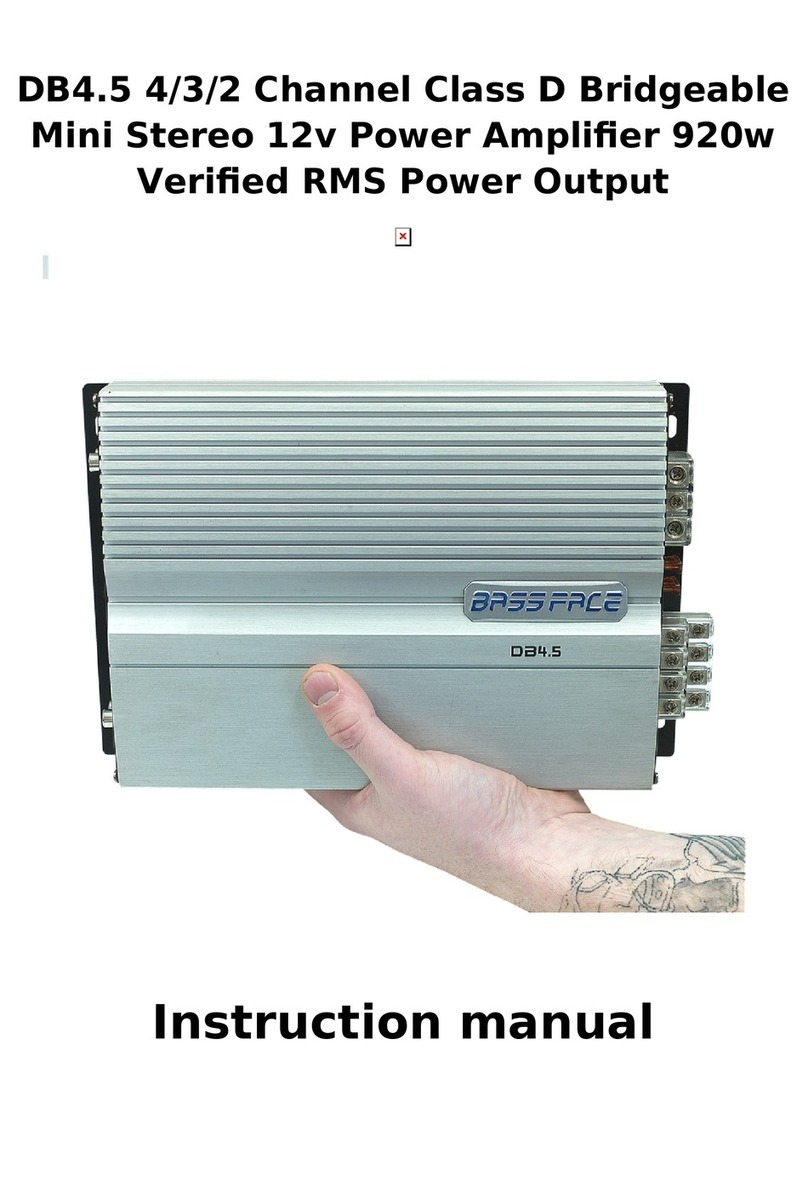
BASSFACE
BASSFACE DB4.5 User manual
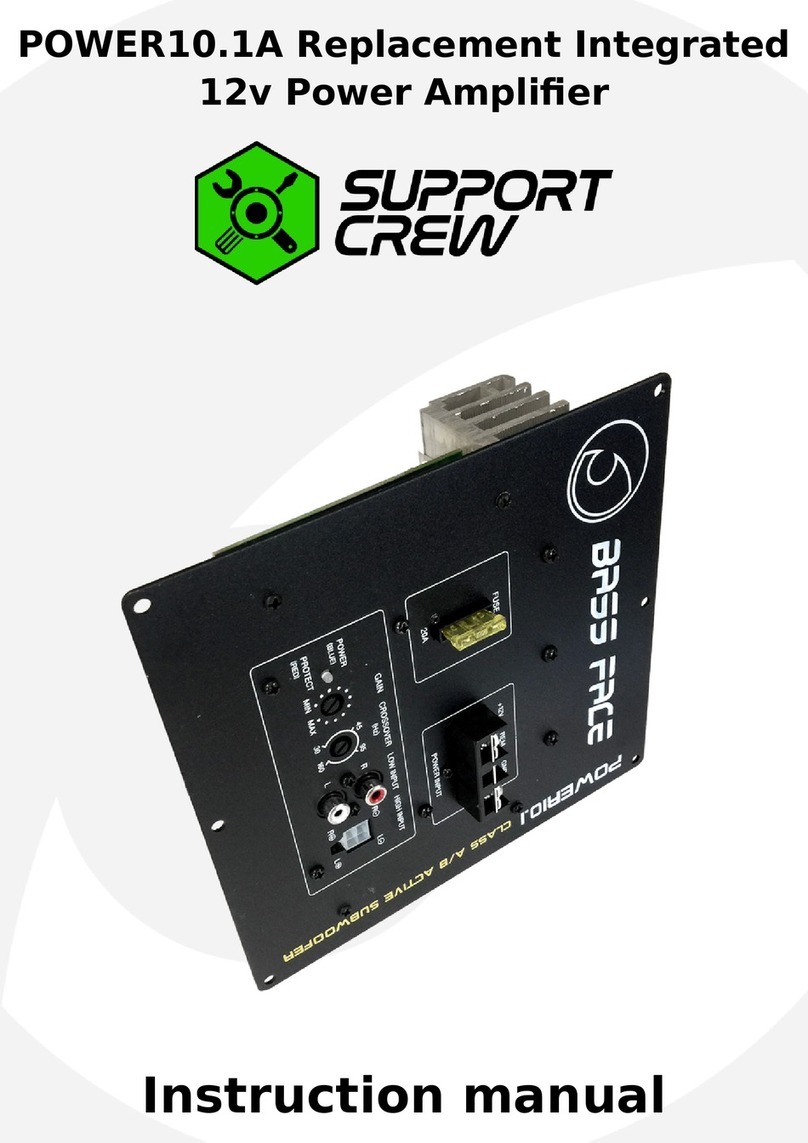
BASSFACE
BASSFACE SUPPORT CREW POWER10.1A User manual
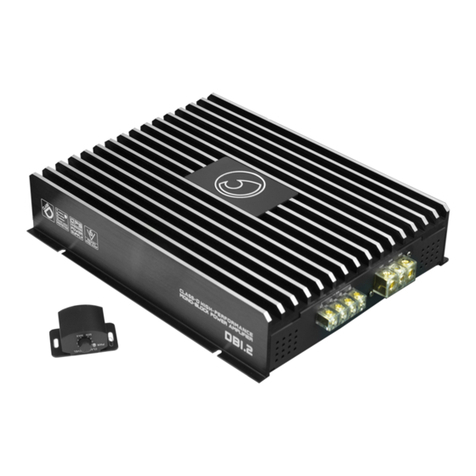
BASSFACE
BASSFACE DB1.2 User manual
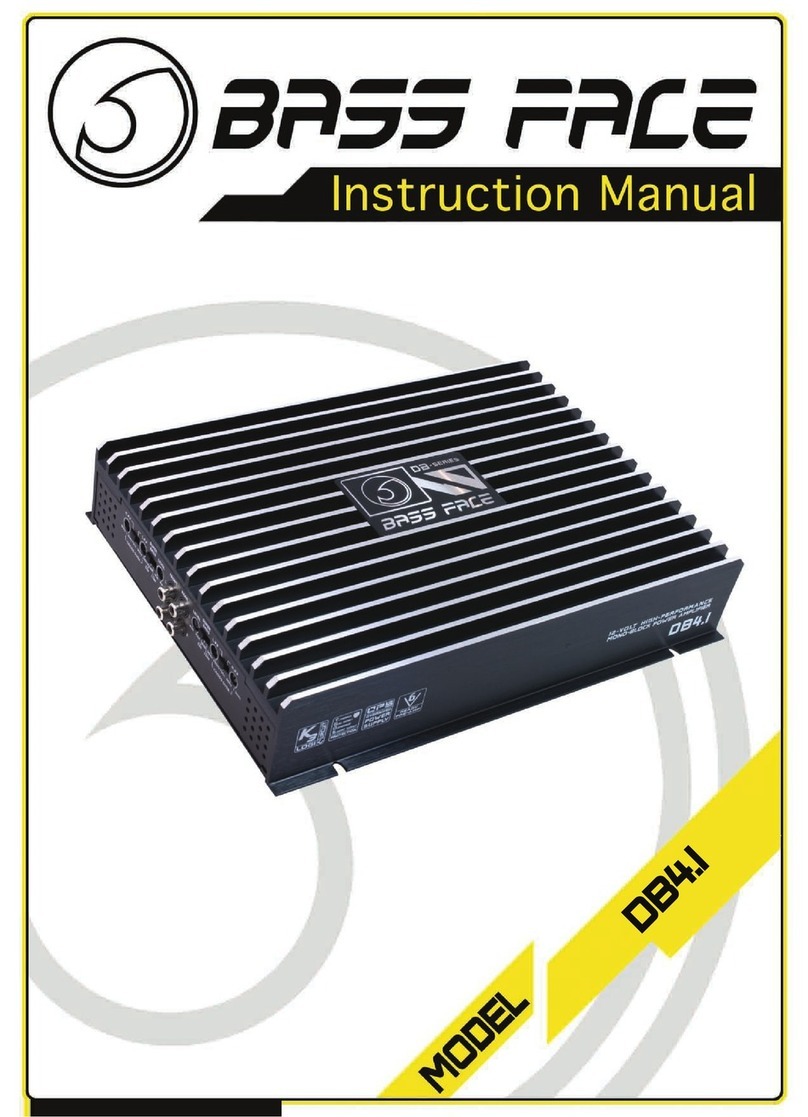
BASSFACE
BASSFACE DB4.1 User manual

BASSFACE
BASSFACE SQ 4.1 User manual
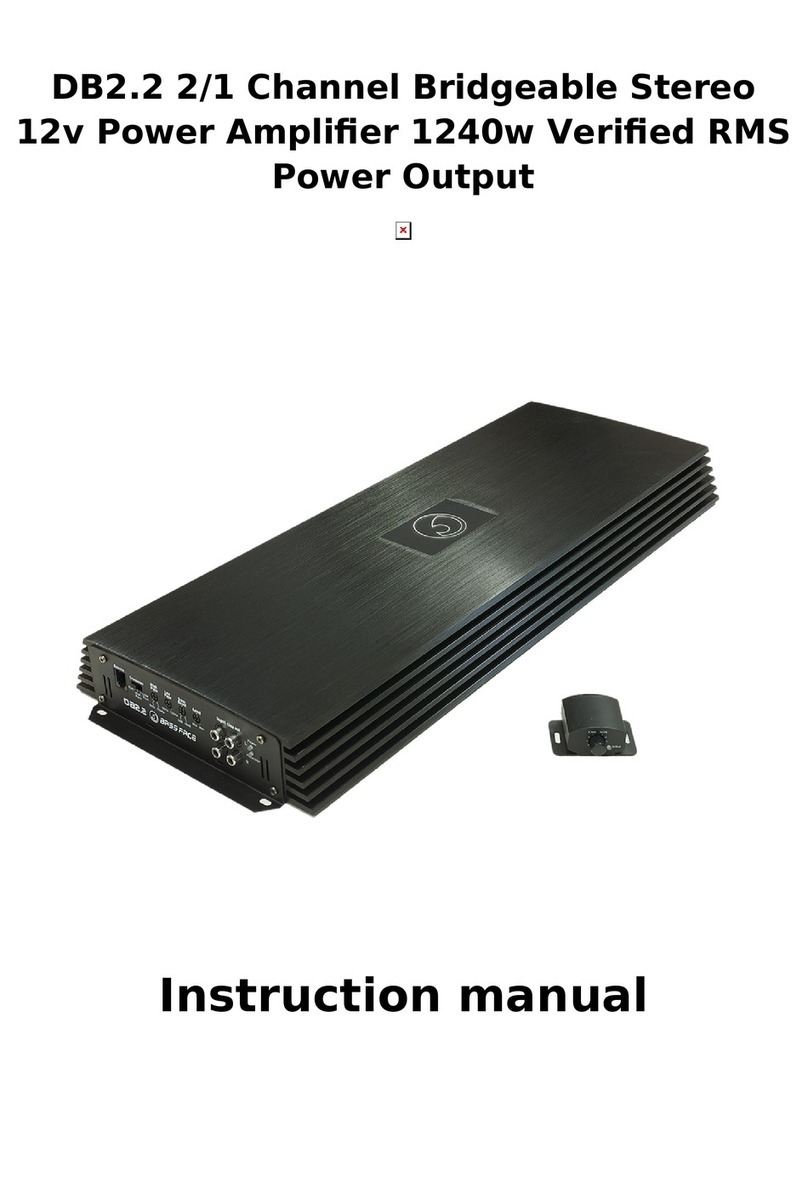
BASSFACE
BASSFACE DB2.2 User manual
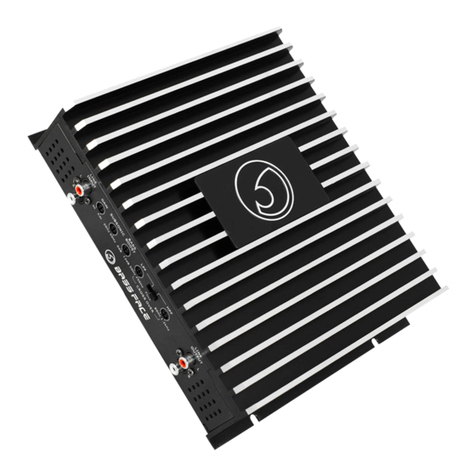
BASSFACE
BASSFACE DB2.1 User manual

BASSFACE
BASSFACE Team 5000/X1DFR User manual

BASSFACE
BASSFACE BlackDB1.1 User manual
